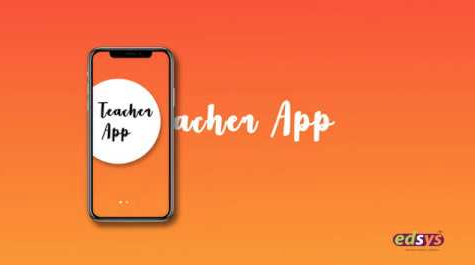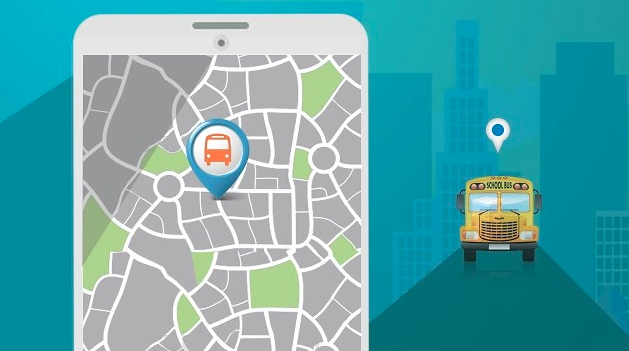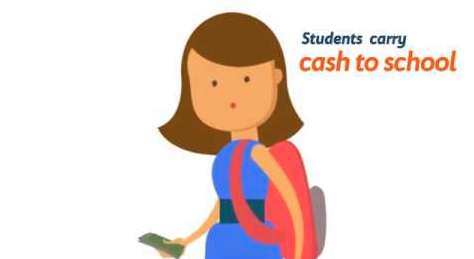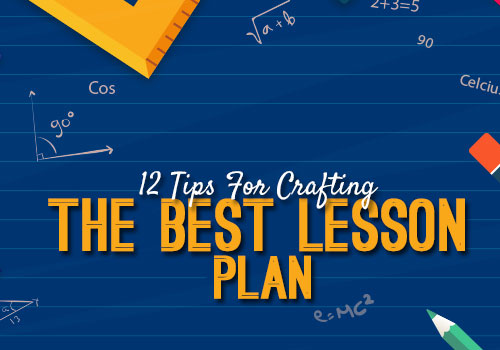Categories(658 Blogs)
Select Category
Watch Right Now
Teacher App - Class
Schedule & Attendance Management App
Parent App from Edsys

Best School Bus Tracking System

Cashless School - For Smart Schools of Tomorrow


12 Tips For Crafting The Best Lesson Plan

In today’s student-centered classroom, approaching them with a well-prepared lesson plan is important. A teacher will have to cover a vast syllabus in a semester or a year and she needs a proper plan to complete it efficiently in the time frame allotted for her subject.
The overall effectiveness of the plan depends on a number of factors which demands a lot of thinking from the teacher. Here let us have a look at some of the indispensable elements to consider while making a lesson plan for any class level.
1. Understand Your Objective
A teacher should be clear about their objective before creating the Best Lesson Plan. She may write down the lesson goal at the top followed by a flowchart of the portions to be covered and the expected result in the time frame. The ultimate goal of every lesson plan should be to help students to not only score well in exams but also to prepare them to apply it in real life. The understanding would be complete if a student would be able to teach the same lesson to a fresh set of students.
2. Prepare An Overview
Have an overview of the portions to be covered or the activities planned in the particular class hour. You may present it in the form of a simple flowchart to the class to make it interesting and students will also feel a better involvement. This also helps students to get an idea about what all will be covered in the class and thus be an indirect participator in the lesson plan.
3. Strategize Your Timeline
Planning a timeline for the lesson plan can be a good idea that helps teachers to execute the plan with a watch for the time too. If it is a 1-hour class, break your plan into 4 sections of 15 minutes or 6 sections of 10 minutes or so. This helps you to execute the plan in a more timely fashion and cover up portions on time. However, it is better to plan a few minutes for each portion to relax or accommodate some changes if needed.
4. Know Your Students
Understand your students before you finalize the lesson plan. A teacher should have an understanding about what their students know till date, what portions need an additional push when teaching and what type of teaching strategy suits them better. Also, not all students of the class will have the same level of understanding. So the plan should accommodate the needs of all types of students in the class and a small portion of the time can be dedicated to weak students.
5. Include a variety of Learning Styles
The lesson plan should not just include one single learning style which invites boredom. So make sure that a range of learning styles are covered in the lesson plan which not only makes the session interesting but improves the overall result of the teaching sessions. The plan can include powerpoint presentations, flowcharts and diagrams, talk shows and more. The lesson plan has to be a mix up of aural, visual, kinesthetic and verbal learning styles.
6. Apply Diverse Student Interaction Patterns
Interacting with students should be a part of an effective lesson plan. Teachers can bring in a variety of interaction patterns throughout the teaching phase. This can include group discussions, friendly debates, virtual field trips, or case studies. Try reading out the lessons and later ask students to read aloud. After completing a portion, you may ask students to present it via pictures. Or ask them to take the variation of the covered topics as seminars.
7. Script Out The Lesson Plan
If you are making a lesson plan for the first time or if you have the problem of panic when seeing a group, it is always better to script out the lesson plan. This helps you to approach the classroom with confidence and no second thoughts. Keep the lesson plan accurately detailed so that even a second person can understand the plan content without explanation. This helps you to easily hand over the lesson plan to another teacher in case of your absence.
8. Proper Closure of the Lesson
Just like how you start the lesson, how you wind up the lesson is very important. A concrete closure to the lesson means that every student in the class is very clear about what portions were covered in the session. The last few minutes of the session should be left for a friendly interaction with the students when you test their understanding. The plan should always have space for students to ask out their doubts if any. A teacher should be dedicated to clarifying their doubts to make sure that the objective of the session is met.
9. Practice and Production
Another important part of a lesson plan is the time for practice and production. Once you complete a topic, a few minutes should be left out for students to practice what they have learned. They can do it as individuals or in pairs. This practice could include worksheets, short assignments or even a small demonstration depending on the subject covered. In the production phase, students should be able to produce something on their own out of what they have learned. This can be done as group activities, board games or so.
10. Warm up and Review
The time when a teacher gives a one-sided lecture and students simply take notes is gone. In today’s student-centered classroom, the comfort and breathing space of the students have to be guaranteed. In addition to the teaching time, the lesson plans should have enough time allotment for warm up and review. A warm-up session can be made part of the plan to refresh them and bring them to the mood. A simple interactive game can help them to improve their participation and involvement in the learning. Similarly, a review of the previous lessons or the portion learned the day before can help them to connect to the present chapter easily.
11. Regular Assessment
Assess your students on a regular basis. Simply teaching the lesson one-sided and not testing if they are grasping the subject at the same pace doesn’t make any sense. So give some time in your plan for assessment to check their understanding of the lesson. This helps you to plan the same lessons again with a different strategy if the students needed additional guidance.
12. Have a Backup Plan
It is always important to have a backup plan for your lesson plan. Things may not always go as smoothly as you plan and unexpected scenarios may pop up in the class.
So it is better to balance the loss without affecting your future plans. Also, it is a good idea to not plan it too tight and be flexible enough to manage some unexpected talks or discussions that may come in between.
Similarly, have one or two copies of your lesson plan and keep one at home in case you misplace the original.
Students will love to learn a subject only if the sessions are interesting and interacting. So teachers can make a deliberate effort to bring in variety to invoke their interest and avoid boredom.
Gamification and similar teaching strategies can help students to learn a subject with fun without getting an actual feel of learning.
Also, it is important to ask for the student feedbacks once in a while and make necessary changes in your teaching styles to make it more effective and engaging.
Keeping this tips or strategies in mind helps teachers to come up with a good lesson plan which can really impact the way students understand the subject. A good teacher’s role is not just helping them to score well in exams but enables them to apply what they have learned in real life too.
Recent Blogs
Our Educational Services
Popular Blogs
Subscribe

SUBSCRIBE TO OUR NEWSLETTER
Sign Up and Recieve the Latest News
Don’t Worry, We Don’t SpamExplore Our Extensive Researched Educational App Directory
Visit Now















